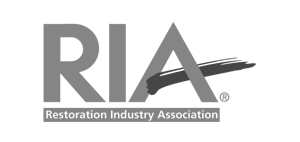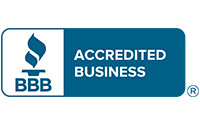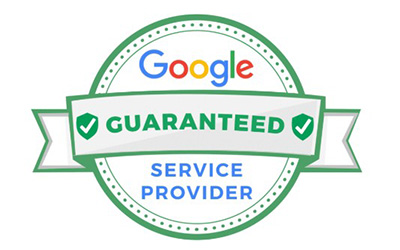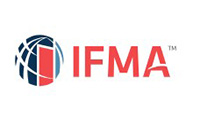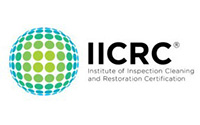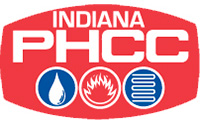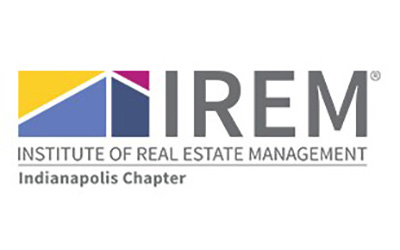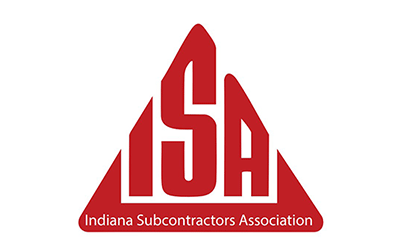Discovering mold in your home can be a cause for concern. The question that often arises is whether it is possible to tackle the mold removal process yourself. In this section, we will explore the feasibility of DIY mold remediation and provide insights into the risks and steps involved in safely removing mold at home.
- Understanding the risks associated with mold
- Assessing the extent of mold growth in your home
- Considering factors before attempting DIY mold remediation
- Exploring the pros and cons of DIY mold removal
- Taking necessary safety precautions during mold remediation
Understanding Mold and Its Risks
To determine if you can remediate mold yourself, it is important to have a basic understanding of mold and its risks. Mold is a type of fungus that thrives in damp and humid environments. It can grow both indoors and outdoors. However, indoor mold growth is particularly concerning as it can lead to various health issues and damage to your property if not addressed promptly.
There are different types of mold that can be found in homes. Some common types include:
- Stachybotrys chartarum (also known as black mold)
- Aspergillus
- Penicillium
- Cladosporium
- Alternaria
Each type of mold has its own characteristics and potential health effects. It’s important to identify the specific type of mold present in your home to better understand the risks it poses.
Exposure to mold can cause a range of health problems. The health effects of mold can vary depending on factors such as the type of mold, the duration of exposure, and individual sensitivity. Some common health effects of mold exposure include:
- Respiratory issues, such as coughing, wheezing, and shortness of breath
- Allergic reactions, including sneezing, runny nose, watery eyes, and skin rashes
- Asthma attacks in individuals with pre-existing asthma
- Headaches and migraines
- Fatigue and lethargy
It’s important to note that different people may react differently to mold exposure. Some individuals may be more sensitive and experience severe symptoms, while others may have minimal or no symptoms at all.
Assessing the Extent of Mold in Your Home
Before attempting to remediate mold yourself, it is crucial to assess the extent of the mold problem in your home. Signs of mold growth should not be ignored, as they can indicate a more significant issue that needs attention. To effectively detect mold, it is essential to be familiar with the common signs of mold growth.
Some common signs of mold growth include:
- Visible mold growth on surfaces, such as walls, ceilings, or floors.
- Musty or unpleasant odor in certain areas of your home.
- Water stains or discoloration on walls, indicating moisture issues.
- Presence of mold spores in the air, which can cause respiratory issues.
To conduct a visual inspection for mold, start by thoroughly examining areas of your home that are prone to moisture, such as bathrooms, basements, or areas with plumbing leaks. Look for any visible signs of mold growth, such as black or green spots on surfaces, fuzzy patches, or discolored areas.
If you suspect mold but cannot visually confirm its presence, you may consider professional mold testing. Professional mold testing options include air sampling, surface sampling, and bulk sampling. These tests can accurately identify the type and concentration of mold in your home, providing valuable information for effective remediation.
Can You Remediate Mold Yourself?
Now that you have a better understanding of mold and have assessed the extent of the problem in your home, it’s time to consider whether you can remediate mold yourself. When deciding to take on the task of DIY mold removal, there are several factors to consider.
Firstly, you need to evaluate the size of the affected area. Minor mold issues that cover less than 10 square feet can often be safely handled by homeowners. However, larger infestations or instances where mold has spread extensively may require professional assistance.
The type of mold present is another crucial factor. While certain molds can be effectively removed using DIY methods, others may pose greater risks and necessitate professional intervention. Mold species such as black mold or toxic molds should be handled with extreme caution due to their potential health hazards.
Your own abilities and comfort level with DIY projects should also guide your decision. DIY mold removal can be physically demanding and may require the use of specialized tools and equipment. If you don’t have the necessary skills, knowledge, or confidence to safely remove mold, it’s best to seek professional help.
DIY Mold Remediation: Pros and Cons
When it comes to mold remediation, many homeowners consider tackling the task themselves. DIY mold removal can have both pros and cons, and it is important to carefully evaluate the advantages and disadvantages before deciding to proceed.
The Pros of DIY Mold Remediation:
- Cost Savings: One of the main benefits of DIY mold remediation is the potential cost savings. Hiring professional mold remediation services can be expensive, and by taking on the task yourself, you can save money on labor costs.
- Control and Independence: DIY mold removal allows homeowners to have more control over the process and be actively involved in resolving the issue. It can provide a sense of independence and satisfaction in successfully completing a home improvement task.
- Immediate Action: When you opt for DIY mold remediation, you can begin the process immediately without having to wait for professionals to become available. This can help prevent the mold from spreading further and causing additional damage.
The Cons of DIY Mold Remediation:
- Improper Remediation: One of the biggest risks of DIY mold removal is the potential for improper remediation. Improper techniques or inadequate equipment can lead to ineffective removal, allowing the mold to persist and potentially pose health risks.
- Health Hazards: Mold removal involves handling and disturbing the mold, which can release mold spores into the air. Without proper precautions, this can lead to the dispersion of mold spores throughout the home, increasing the risk of respiratory issues and allergies.
- Complexity and Time-Consuming: DIY mold remediation requires knowledge of effective techniques, proper safety precautions, and the right equipment. It can be a complex and time-consuming process, especially for larger mold infestations, which may require professional expertise.
Before deciding whether DIY mold remediation is the right choice for you, carefully weigh these pros and cons. Consider the size of the affected area, the type of mold present, and your own abilities and comfort level with DIY projects. Remember, if you are unsure or concerned about the potential risks, it is always best to seek professional mold remediation services.
Safety Precautions for DIY Mold Removal
When undertaking DIY mold removal, it is essential to prioritize safety, protecting yourself and others from potential health risks. By following proper safety precautions, you can minimize exposure to mold spores and prevent cross-contamination. Here are some key safety measures to implement during your mold remediation process:
1. Wear Personal Protective Equipment (PPE): Before starting any mold removal activities, ensure you have the appropriate protective gear. This includes wearing gloves, goggles, and a respirator mask that is specifically designed to filter out mold spores.
2. Implement Containment Measures: To prevent the spread of mold spores to unaffected areas of your home, establish containment measures. This involves sealing off the mold-infested area with plastic sheets or tarps, creating a physical barrier that keeps mold spores from dispersing.
3. Ensure Proper Ventilation: Adequate ventilation is crucial during mold removal to reduce the concentration of airborne mold spores. Open windows and doors, and use fans or dehumidifiers to improve airflow. This helps to minimize the risk of spore inhalation and facilitates the drying process.
4. Safely Dispose of Contaminated Materials: When removing mold-infested materials, such as drywall or carpeting, properly dispose of them to prevent further contamination and potential reinfestation. Seal the materials in plastic bags or containers before disposing of them in accordance with your local regulations.
5. Clean and Disinfect: After removing the mold, thoroughly clean and disinfect the affected area using appropriate antimicrobial solutions. This helps to kill any remaining mold spores and inhibits future mold growth.
By following these safety precautions, you can protect yourself and minimize the risk of mold-related health issues. Remember, if you’re unsure about your ability to safely remediate the mold yourself or if the mold problem is extensive, it’s recommended to seek professional mold remediation services to ensure the job is done effectively and safely.
Step-by-Step Guide to DIY Mold Remediation
In this section, you will find a detailed step-by-step guide on how to successfully remove mold yourself. By following these instructions, you can tackle mold remediation in your home with confidence. Remember to take all necessary safety precautions and wear protective gear throughout the process.
Note: Before starting the mold remediation process, ensure that you have identified the type of mold present and that the affected area is within a manageable size. If you are unsure or dealing with extensive mold growth, it is recommended to consult a professional mold remediation service.
- Preparations: Begin by gathering the necessary tools and materials for mold removal. This includes gloves, goggles, a respirator mask, plastic sheets, garbage bags, a scrub brush, a HEPA vacuum cleaner, and a mold-specific cleaner or a mixture of water and detergent.
- Containment: Before you start removing mold, create a containment area to prevent mold spores from spreading to unaffected areas. Seal off the affected area using plastic sheets and tape, ensuring a tight seal.
- Safe Removal: Wearing protective gear, carefully remove any mold-infested materials, such as drywall or carpeting, and place them in plastic bags for disposal. Avoid dry brushing or vacuuming moldy surfaces, as this can release spores into the air.
- Cleaning: Using a mold-specific cleaner or a mixture of water and detergent, thoroughly clean all non-porous surfaces affected by mold. Scrub the surfaces with a brush to remove visible mold growth and disinfect them to kill any remaining spores.
- Disposal: Double-bag the mold-infested materials and seal them tightly. Dispose of the bags as per your local regulations. Avoid leaving the bags outside or in unsealed trash cans to prevent cross-contamination.
- HEPA Vacuuming: After removing the visible mold, use a HEPA vacuum cleaner to clean the entire affected area and surrounding spaces. This will help remove any remaining mold spores that may have settled on surfaces or in the air.
- Final Cleaning: Once the removal process is complete, clean all tools, equipment, and surfaces thoroughly. Dispose of used cleaning supplies properly and wash or discard protective gear as instructed by the manufacturer.
Remember to monitor the area for any signs of mold regrowth in the future. Proper ventilation and moisture control can help prevent mold from returning. If you notice recurring mold problems or are unsure about the effectiveness of your DIY remediation, it is advisable to seek professional assistance.
Conclusion
In conclusion, while it is possible to attempt DIY mold remediation, it is important to carefully consider the factors involved before deciding whether to tackle mold removal yourself. Throughout this article, we have explored the risks and steps involved in DIY mold remediation, as well as the pros and cons of taking on the task independently.
It is crucial to remember that mold remediation can be a complex and potentially hazardous process. Factors such as the size of the affected area, the type of mold present, and your own abilities and comfort level with DIY projects should all be taken into account. If the mold problem is extensive or if you have any doubts about your ability to safely and effectively remove the mold, it is advisable to seek professional mold remediation services.
Professional mold remediation services offer several advantages. They have the expertise and specialized equipment to properly assess the extent of the mold problem, safely remove the mold, and ensure thorough remediation to prevent recurrence. Additionally, professional services can provide peace of mind by handling the entire process efficiently and effectively, minimizing potential risks to your health and property.
Ultimately, the decision to attempt DIY mold remediation or hire professionals should be based on a careful evaluation of the specific circumstances. Prioritizing your safety and the thorough removal of mold is key. By considering the information presented in this article, you can make an informed decision that best suits your needs and ensures a safe and effective resolution to the mold issue in your home.
FAQ
Can I remediate mold myself?
Yes, it is possible to remediate mold yourself. However, it is important to assess the extent of the mold problem, consider the type of mold present, and evaluate your own abilities and comfort level with DIY projects before attempting mold removal at home.
What is mold?
Mold is a type of fungus that can grow indoors and outdoors. It thrives in moist environments and can cause structural damage to buildings. There are various types of indoor mold, including black mold, green mold, and white mold.
What are the risks of mold exposure?
Mold exposure can lead to a variety of health issues, including respiratory problems, allergies, and other allergic reactions. Prolonged exposure to mold can also have more severe health effects, especially for individuals with weakened immune systems or pre-existing respiratory conditions.
How can I detect mold in my home?
Signs of mold growth include visible mold, a musty odor, water stains or discoloration on walls or ceilings, and the presence of mold spores in the air. You can conduct a visual inspection to identify areas with mold growth or consider professional mold testing for a more accurate assessment.
Should I attempt DIY mold remediation?
The decision to attempt DIY mold remediation should consider several factors, including the size of the affected area, the type of mold present, and your own abilities and comfort level with DIY projects. If the mold problem is extensive or if there are health concerns, it is advisable to seek professional mold remediation services.
What are the pros and cons of DIY mold remediation?
The advantages of DIY mold remediation include potential cost savings and the satisfaction of completing the task yourself. However, there are also drawbacks, such as the risk of improper remediation, which can lead to further damage or health issues, and the potential dispersion of mold spores during the removal process.
What safety precautions should I take during DIY mold removal?
Safety precautions for DIY mold removal include wearing personal protective equipment (PPE) such as gloves, goggles, and a mask, implementing containment measures to prevent cross-contamination, and ensuring proper ventilation to minimize the spread of mold spores.
What are the steps involved in DIY mold remediation?
The step-by-step guide to DIY mold remediation includes preparations such as sealing off the affected area, safely removing mold-infested materials, using appropriate cleaning and disinfection techniques, and disposing of mold waste responsibly.
Should I hire a professional for mold remediation?
If the mold problem is extensive, if there are health concerns, or if you are unsure about the proper remediation process, it is advisable to hire a professional mold remediation service. Professionals have the knowledge, experience, and equipment to safely and effectively remove mold from your home.



